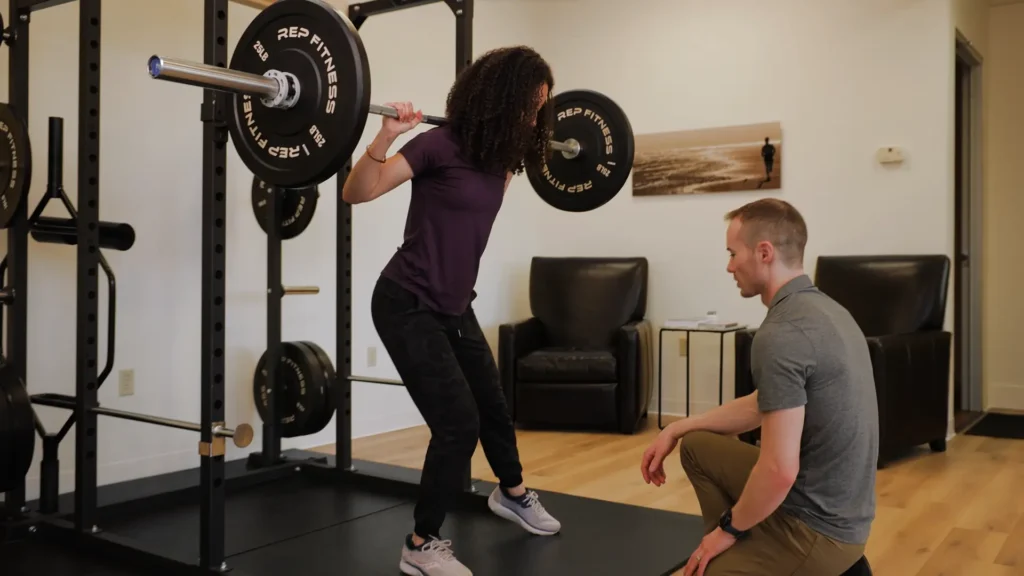Physical therapy stands as a cornerstone in the realm of healthcare, offering a pathway to recovery, rehabilitation, and enhanced mobility for countless individuals worldwide. As people navigate injuries, surgeries, or chronic conditions, curiosity often arises, leading to a multitude of questions about this crucial field. Here, we delve into the top five most frequently asked questions about physical therapy, shedding light on its principles, benefits, and misconceptions. Let’s dive into Unveiling the Top 5 Most Asked Questions about Physical Therapy.
What Exactly is Physical Therapy?
Physical therapy, often abbreviated as PT, is a healthcare specialty aimed at improving and restoring physical function and mobility. It encompasses a diverse range of techniques, exercises, and modalities tailored to each individual’s needs. Whether recovering from surgery, managing chronic pain, or seeking to enhance athletic performance, physical therapists work closely with patients to devise personalized treatment plans that address their unique circumstances.
Physical therapists, or PTs, are highly trained healthcare professionals who hold either a Doctor of Physical Therapy (DPT) degree or a Master of Physical Therapy (MPT) degree, depending on their education background. They undergo extensive training in anatomy, physiology, biomechanics, and rehabilitation techniques, equipping them with the knowledge and skills necessary to assess, diagnose, and treat a wide array of musculoskeletal, neurological, and cardiopulmonary conditions.

Who Can Benefit from Physical Therapy?
The scope of physical therapy is vast, catering to individuals of all ages and backgrounds. From infants with developmental delays to elderly adults seeking to maintain independence, anyone experiencing physical limitations or discomfort can potentially benefit from PT. Common conditions treated by physical therapists include musculoskeletal injuries, neurological disorders, orthopedic surgeries, sports-related injuries, and chronic pain conditions like arthritis or fibromyalgia. Additionally, PT serves as a crucial component of pre and post-operative care, helping individuals regain strength, mobility, and function following surgical procedures.
What Should I Expect During a Physical Therapy Session?
Physical therapy sessions typically commence with an initial evaluation, during which the therapist assesses the patient’s medical history, current condition, and functional limitations. Based on this assessment, a customized treatment plan is developed, incorporating various interventions such as therapeutic exercises, manual therapy, modalities (e.g., heat or ice therapy), and patient education. Throughout the sessions, the therapist guides and instructs the patient, monitoring progress and adjusting the treatment plan as necessary to optimize outcomes. The frequency and duration of therapy sessions depend on factors such as the severity of the condition, individual goals, and response to treatment.
During a typical physical therapy session, patients may engage in a variety of activities aimed at improving strength, flexibility, balance, coordination, and endurance. Therapeutic exercises may include stretching, strengthening, cardiovascular conditioning, and functional activities tailored to the patient’s specific goals and needs. Manual therapy techniques, such as joint mobilization, soft tissue mobilization, and massage, may also be utilized to address pain, stiffness, and restricted range of motion. Additionally, modalities such as heat, cold, electrical stimulation, ultrasound, or traction may be applied to alleviate pain, reduce inflammation, and promote tissue healing.
Does Physical Therapy Hurt?
This question often arises due to misconceptions surrounding certain physical therapy techniques, particularly manual therapy or therapeutic exercises that may initially cause discomfort. However, it’s essential to differentiate between discomfort and pain. While some degree of discomfort during therapy is not uncommon, especially when working to restore mobility or flexibility, physical therapists prioritize patient comfort and safety. They employ techniques tailored to each individual’s tolerance levels, gradually increasing intensity as the patient progresses. Effective communication between the patient and therapist is crucial in ensuring that therapy remains within the patient’s comfort zone while still challenging enough to promote healing and improvement.
How Long Does It Take to See Results from Physical Therapy?
The timeline for experiencing noticeable results from physical therapy varies widely depending on factors such as the nature and severity of the condition, the patient’s overall health, adherence to the treatment plan, and individual response to therapy. While some patients may experience significant improvements within a few sessions, others may require more prolonged and consistent therapy to achieve their goals. Additionally, the journey to recovery often extends beyond the formal therapy sessions, as patients are encouraged to incorporate prescribed exercises and lifestyle modifications into their daily routines to maintain progress and prevent recurrence of symptoms.
In conclusion, physical therapy serves as a beacon of hope for individuals seeking to overcome physical challenges and reclaim their quality of life. By addressing common questions and misconceptions surrounding PT, we aim to foster a deeper understanding and appreciation for this invaluable healthcare specialty. Whether embarking on a journey of rehabilitation or proactively striving for optimal physical health, physical therapy stands ready to support and empower individuals every step of the way.


